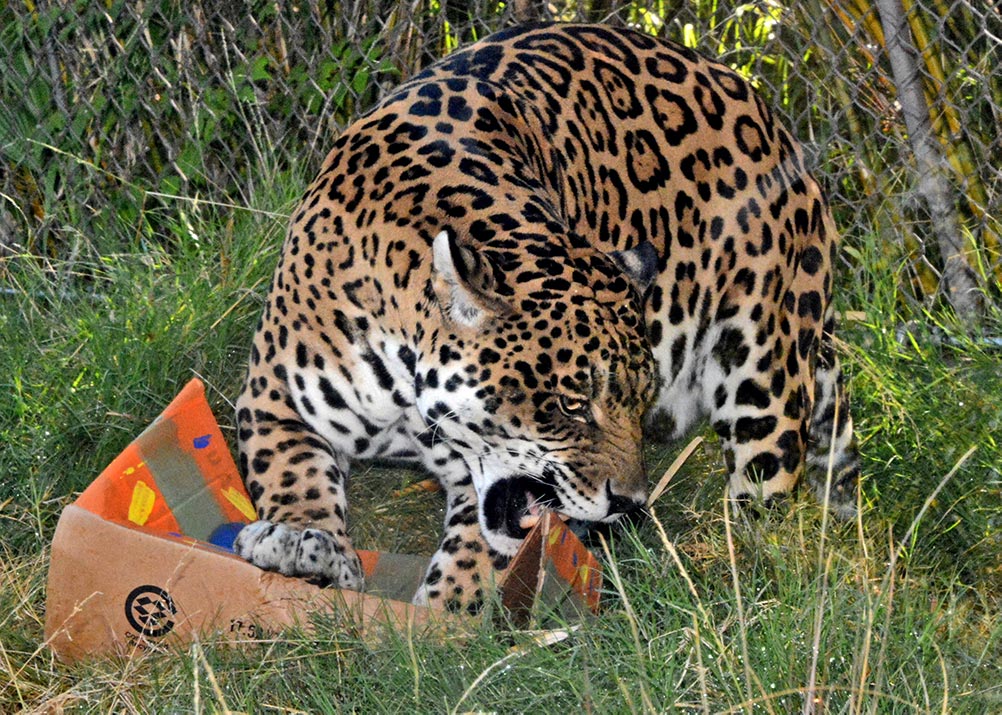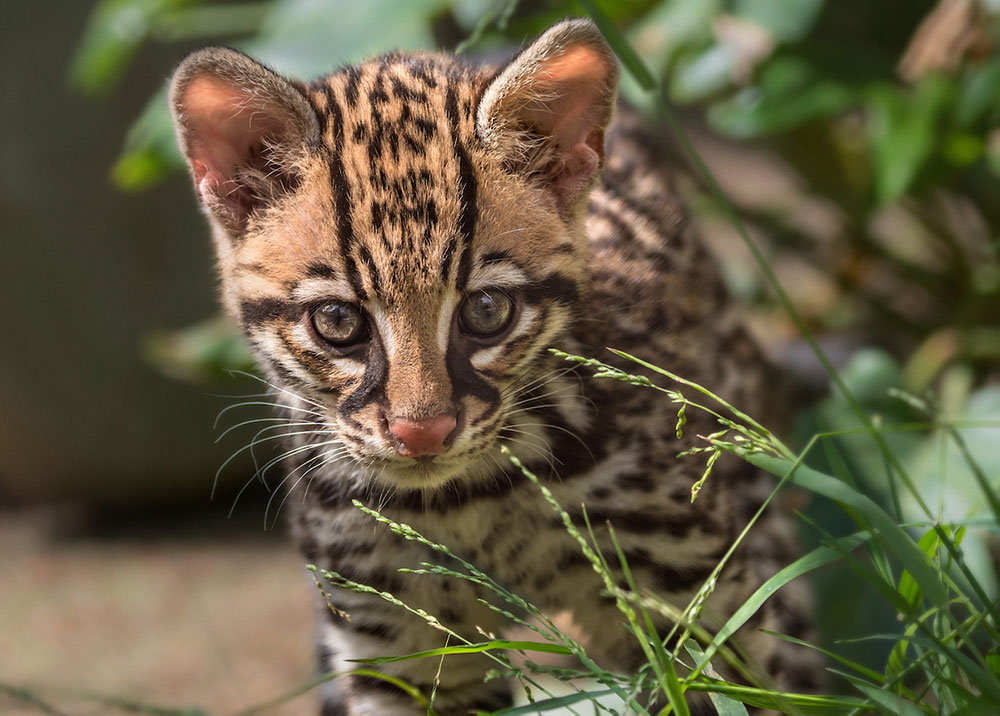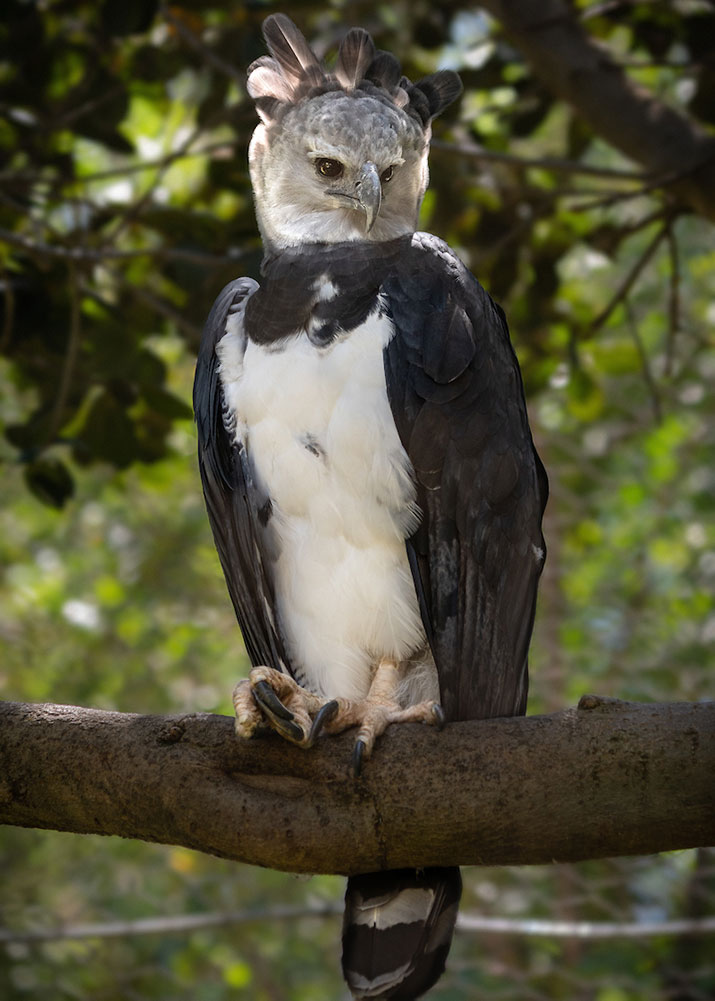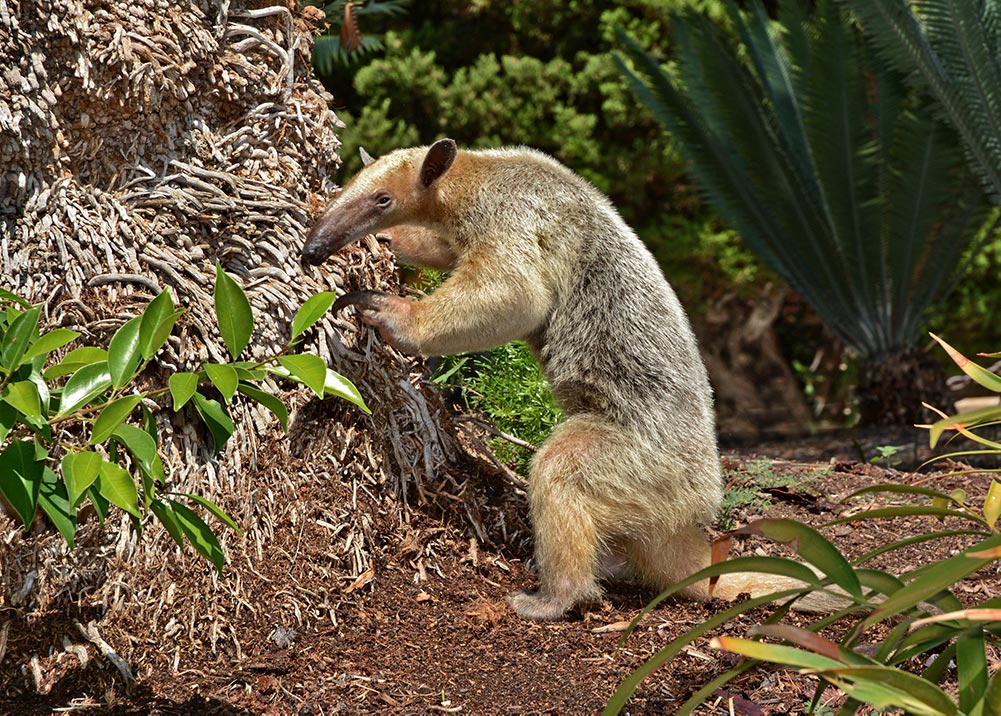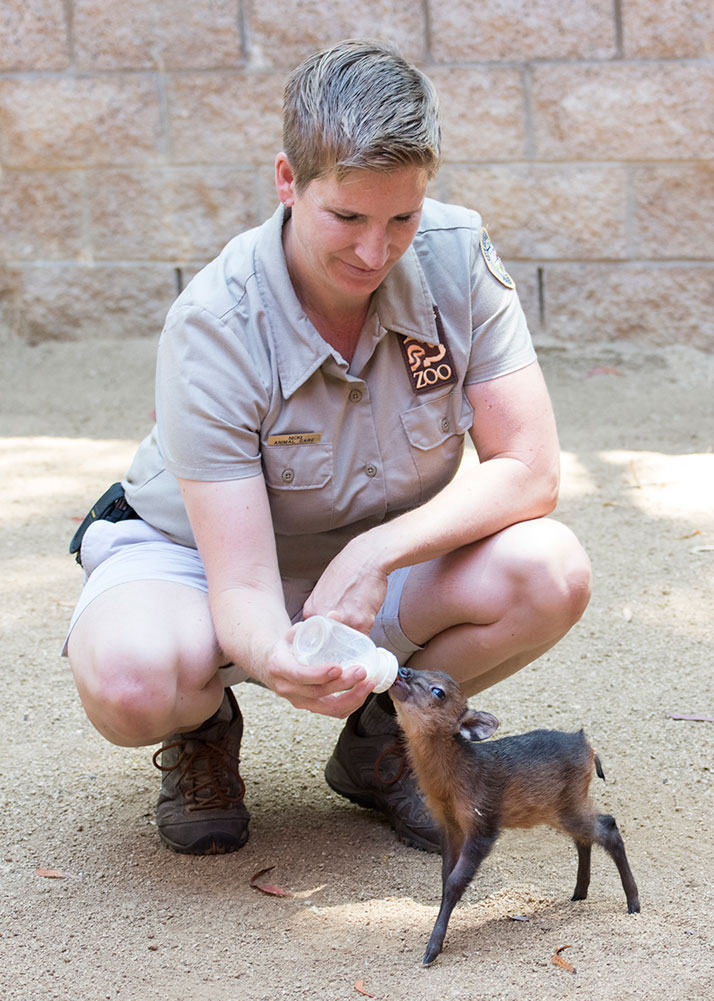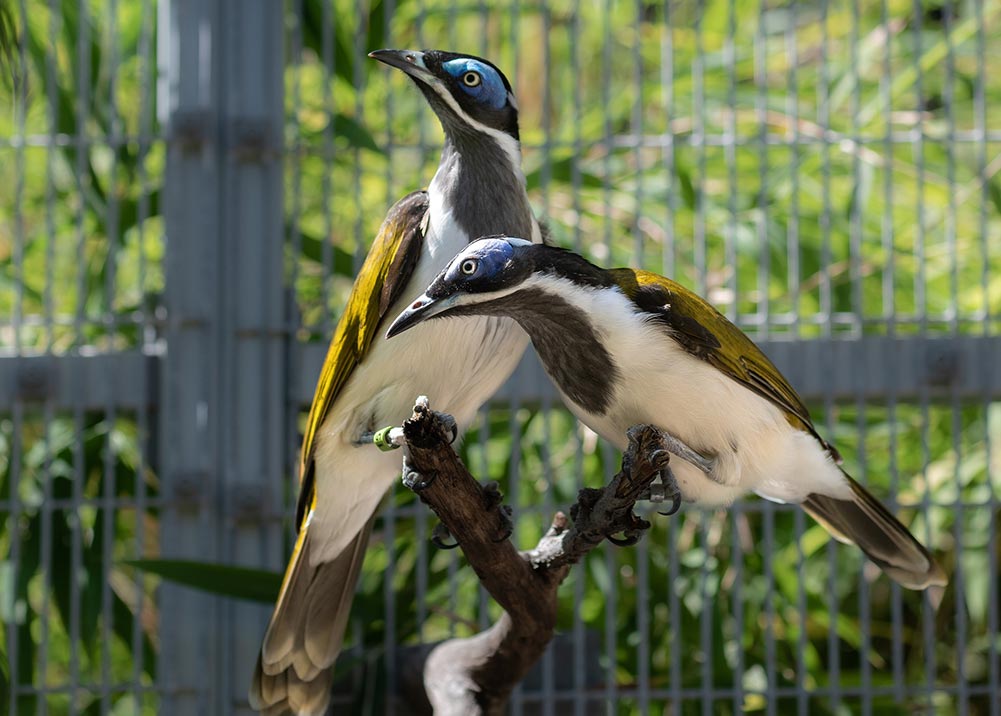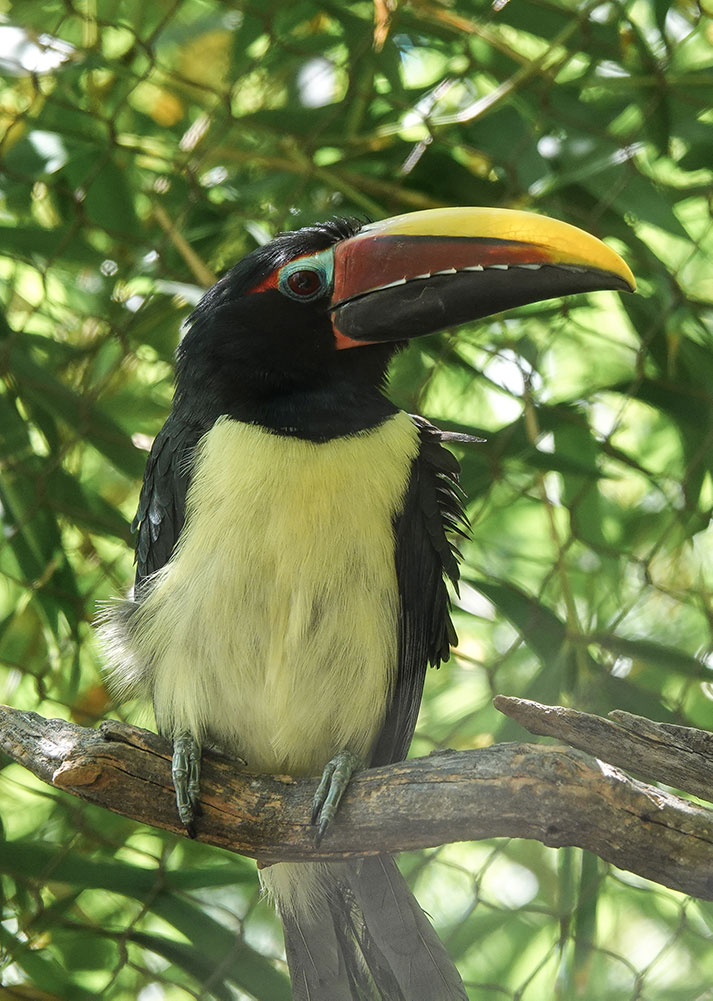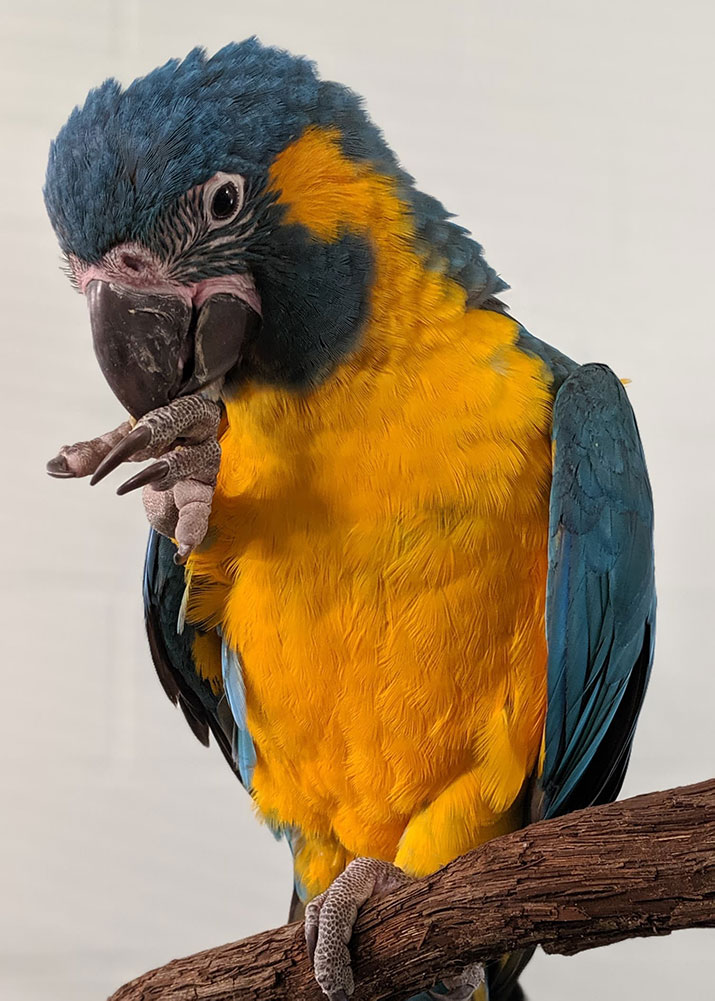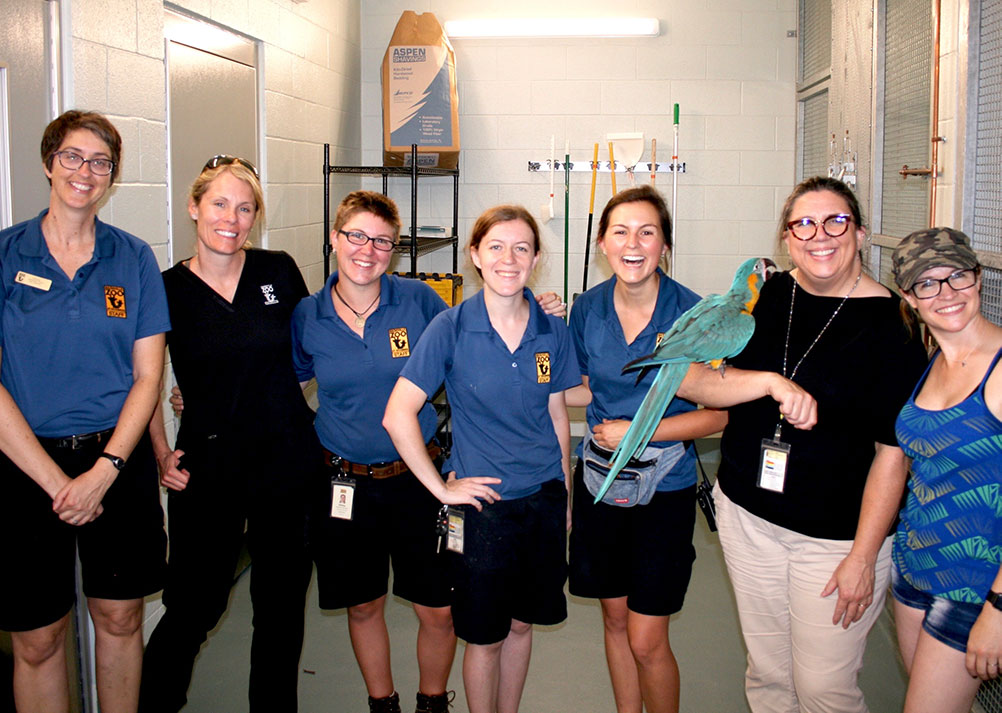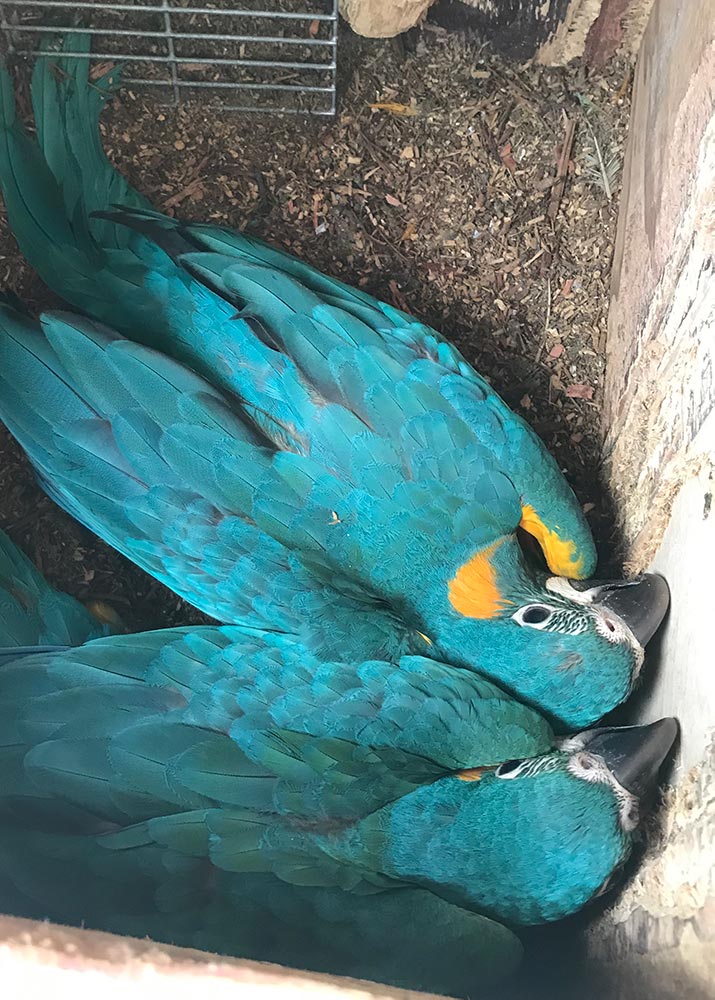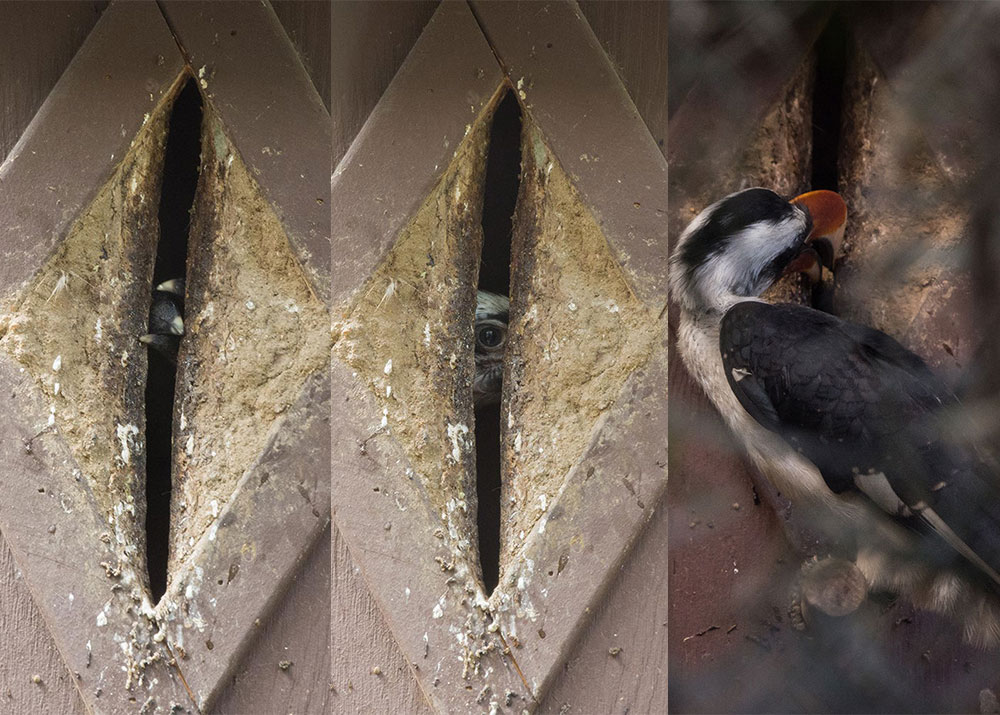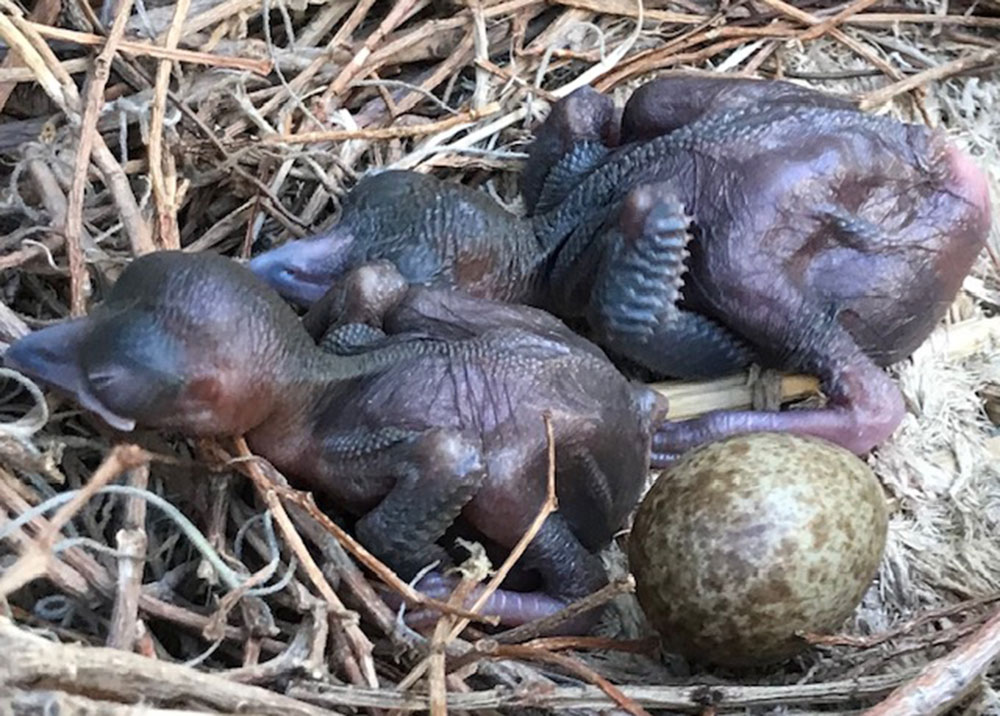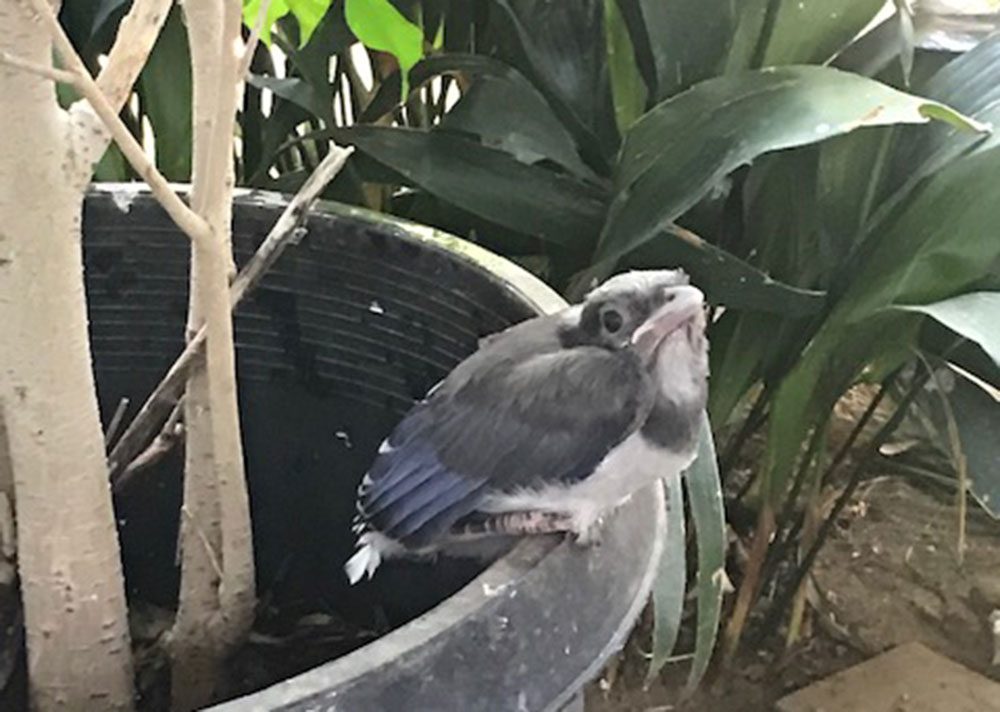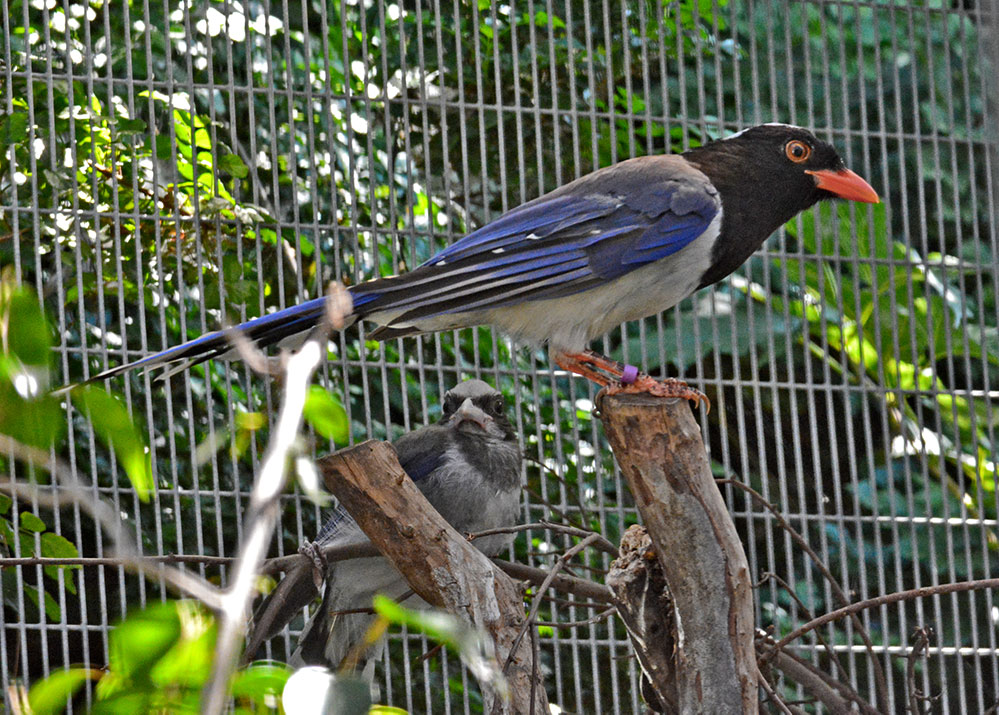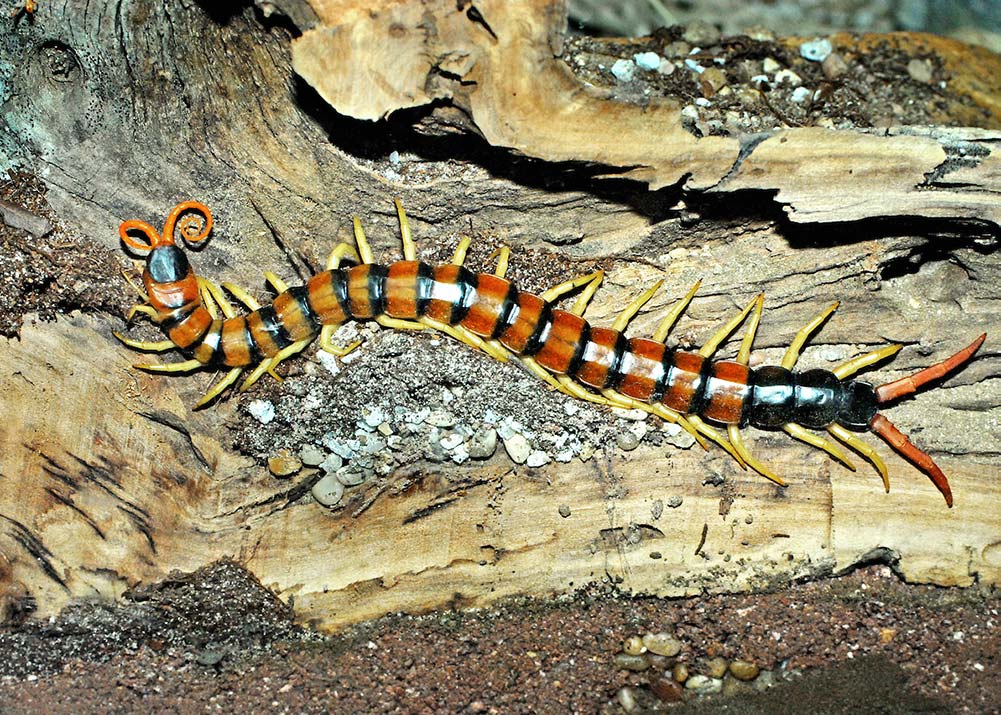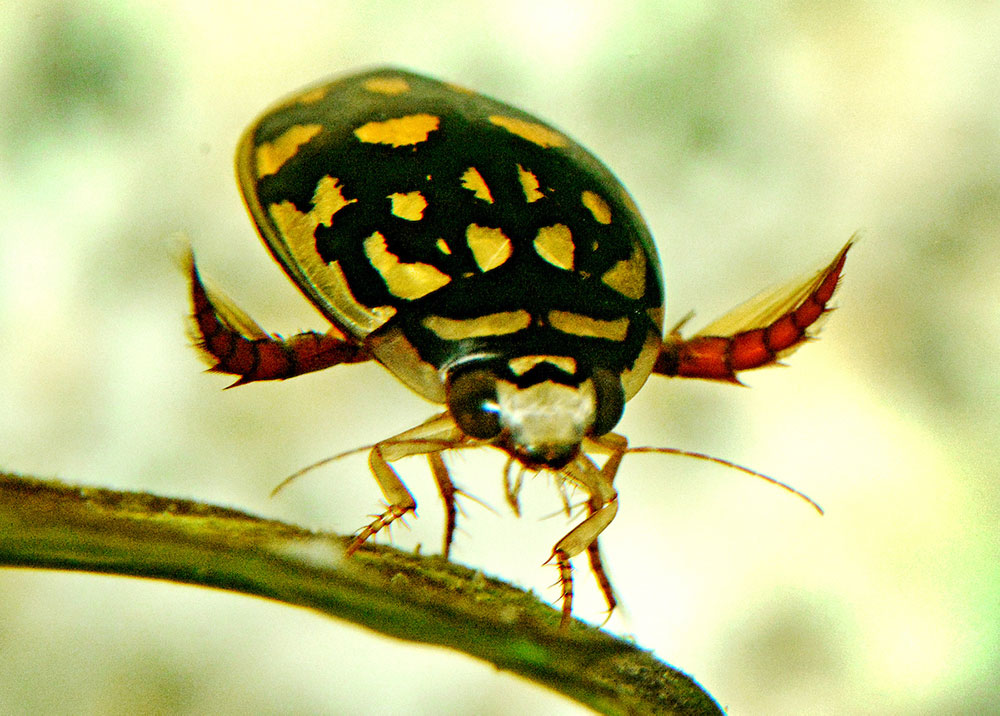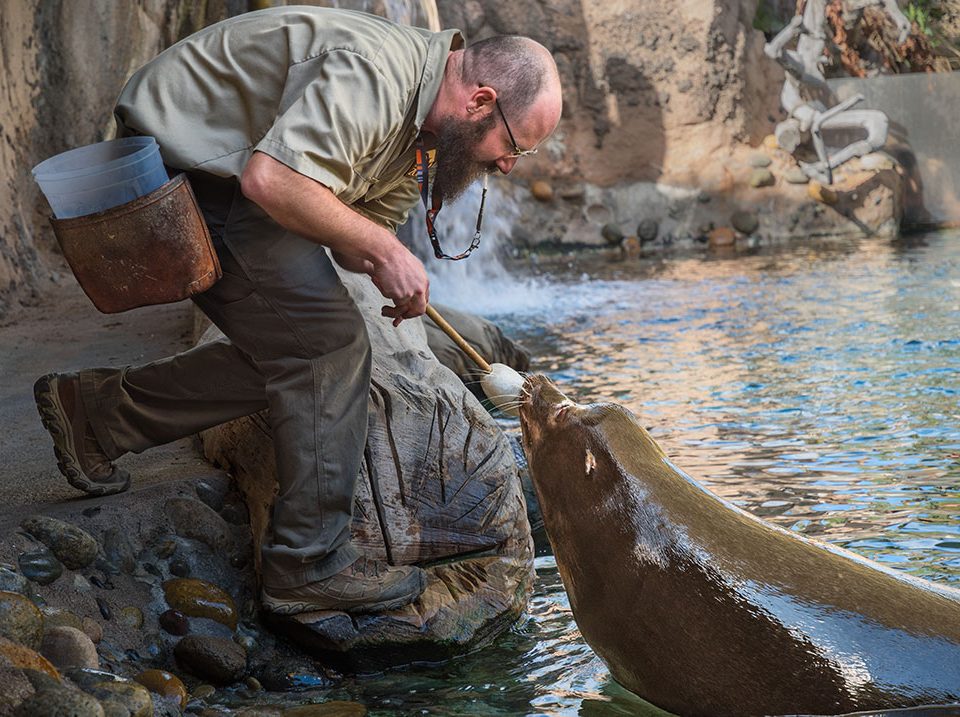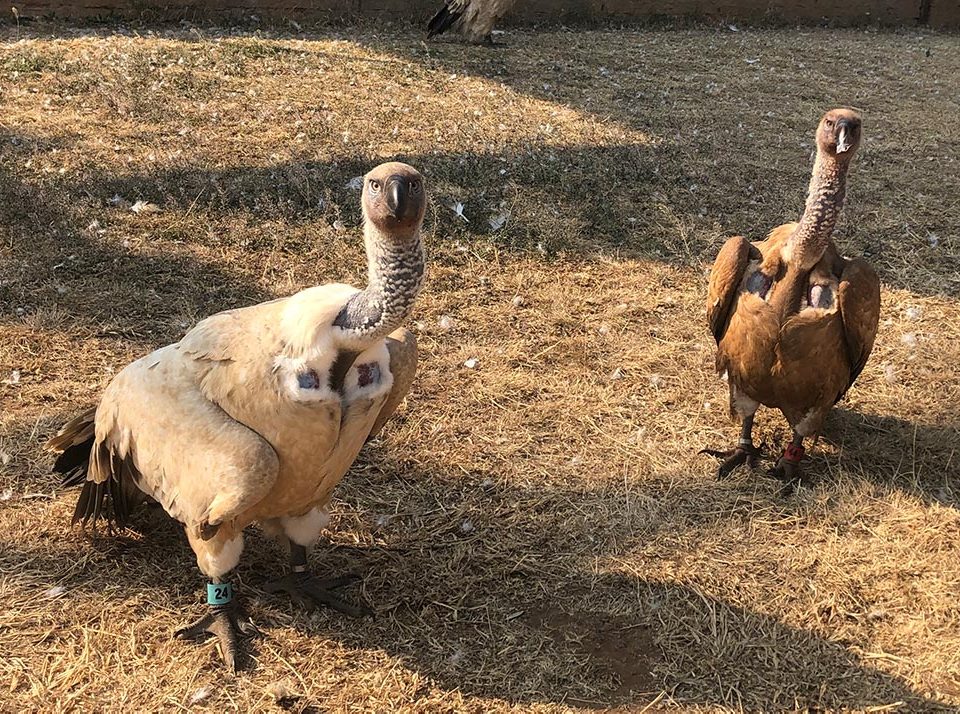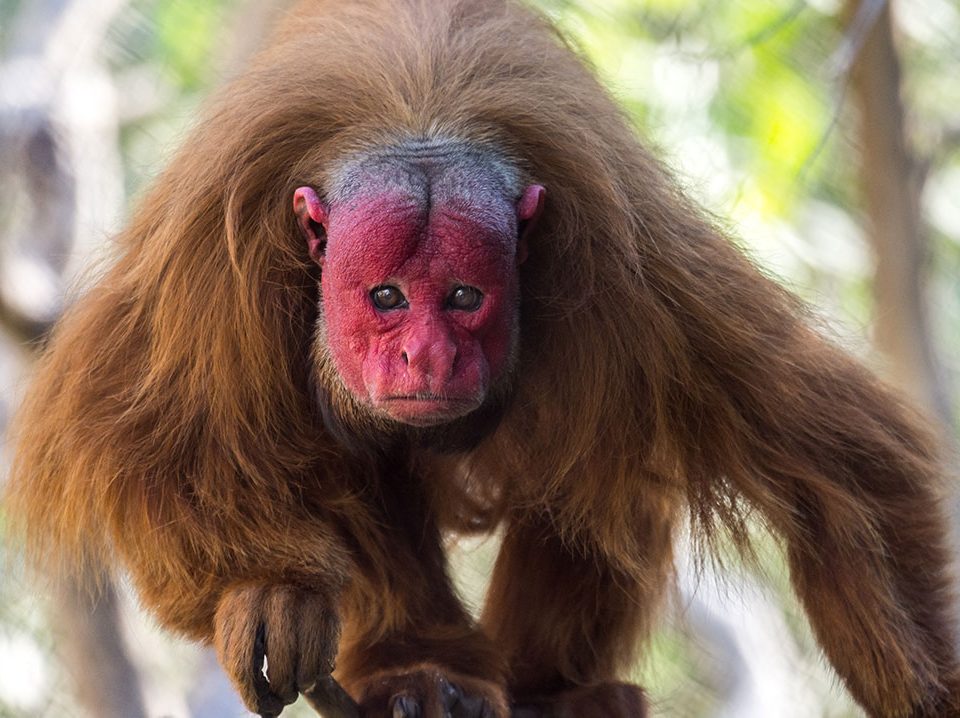New in the Zoo

What’s in a Name?
September 1, 2019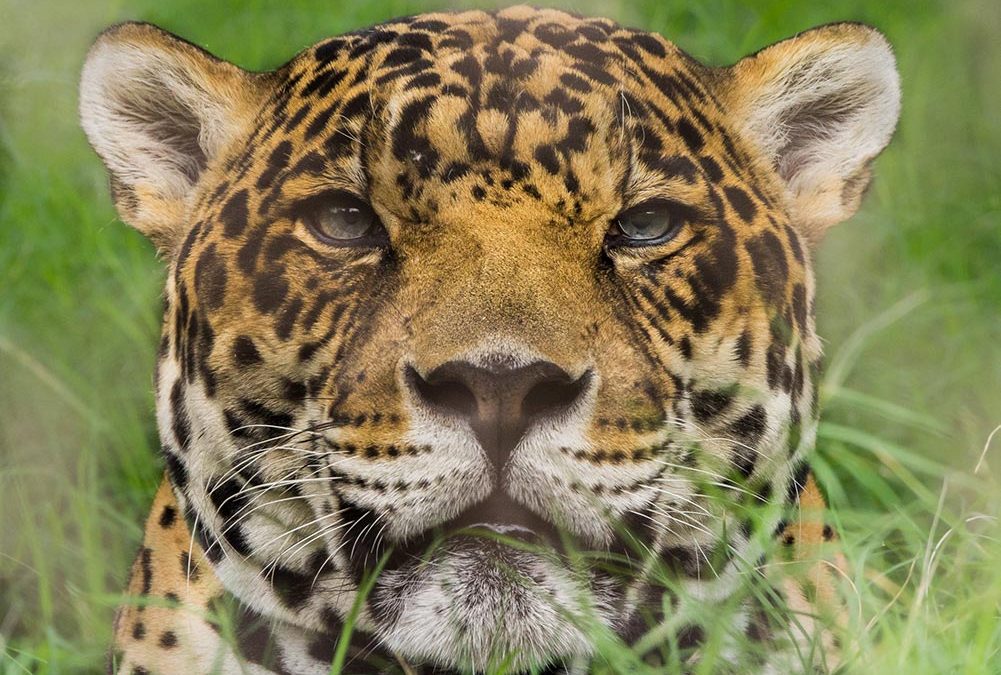
Male jaguar Kaloa arrived at the L.A. Zoo in 2005 Photo by Matt Carey
Animals may not be aware of birthdays, but tasty surprises are always welcome. On July 12, the Zoo’s senior male jaguar, Kaloa, turned 18. In the wild, these cats typically have a lifespan of 12 to 15 years. To mark the occasion, Senior Animal Keeper Dani Cremona, who worked with him for many years, and Animal Keeper Debbie Dadomo, who is now Kaloa’s primary caretaker, arranged a little celebration that included a special enrichment box with a meaty treat inside. “I love this cat,” Dadomo adds. “He is handsome and smart and very chill. He makes my heart smile every single day.”
Kaloa arrived in L.A. on April 6, 2005, from the Denver Zoo and is one of Rainforest of the Americas’ most charismatic residents. “All of the animals are special to us, but working with him is the highlight of my career,” comments Cremona. “He is such a focused, intelligent cat who is full of character.”
Like jaguars, ocelots are highly adaptable and are found in much of the same range. Averaging about twice the size of a domestic cat, ocelots belong to the small cat subfamily, Felinae, and can be found in diverse habitats from Arizona and Texas in the U.S. through Mexico, Central America, and all of South America with the exception of Chile.
Nocturnal and secretive, much is still unknown about their biology and habits. Genetic analyses of specific ocelot subgroups show that certain regional populations (considered “vulnerable” by the IUCN) are declining, including those in the U.S. and parts of Brazil outside the Amazon basin. The Association of Zoos and Aquariums (AZA) has been working with the Brazilian government to establish insurance populations of Brazilian ocelots in North American zoos. Currently, ocelots are found in about 100 facilities; of these, just 29 house the Brazilian subspecies—one being the L.A. Zoo.
On July 9, female ocelot Ixchel transferred to the Exotic Feline Breeding Compound in Rosamond, California, as part of a Species Survival Plan breeding recommendation. Staff there are awaiting a male to pair with her. Ixchel and her sister, Pipaco, were born at the L.A. Zoo and their parents still reside here.
A female harpy eagle arrived on July 22, from the San Diego Zoo. She is one year old and hatched at Miami Metro Zoo. Animal Care hopes to pair her with the resident male in Rainforest of the Americas as part of a Species Survival Plan recommendation.
The new male tamandua, Lou, is being introduced to Charlie the Linné’s two-toed sloth. They will be roommates in the Winnick Family Children’s Zoo until Lou is introduced to the female tamanduas for breeding.
The two oldest gerenuk babies that had been in the Winnick Family Children’s Zoo nursery yard have transferred to the San Diego Zoo, and a tiny male red-flanked duiker who was born on July 12 can now be seen there. The new male bongo baby is out with his parents in their habitat in the Africa section of the Zoo.
A second clutch of Baja cape rock lizards finished hatching on July 9; a total of 16 babies hatched. This species is found in the Sierra la Laguna and Sierra la Trinidad of the Cape region of Baja California Sur, as well as on Islas Espiritu Santo and Partida Sur in the Gulf. When the babies are big enough, some will move to the Arroyo Lagarto at the LAIR and others will transfer to other zoos.
A pair of blue-faced honeyeaters arrived on July 10. This bird species is native to northern and eastern Australia as well as southern New Guinea. About the size of American robins, they live in pairs or small groups and are locally also known as banana birds due to their fondness for the flowers and fruits of banana plants. After completing quarantine, they moved into the Avian Conservation Center, the Zoo’s off-exhibit care and breeding center for birds that require a little more seclusion or special attention.
A male green aracari (smallest member of the toucan family) also arrived on July 10 and will eventually be paired with the female who arrived earlier this year and can be found in Rainforest of the Americas.
Perhaps you’ve heard the story of Thorn, the blue-throated macaw chick who was hand-raised in our Avian Conservation Center. As part of a Species Survival Plan recommendation for this critically endangered species, Thorn departed for Nashville Zoo on July 1, accompanied by Animal Keeper Lori Rogalski, who helped care for him when his parents were unable to, due to necessary medical treatment.
“It was very hard to say goodbye to Thorn,” Rogalski comments. “We had an amazing bond that I will always cherish. But every kid has to grow up and go onto his or her own adventure. The Nashville Zoo staff was so loving and compassionate, they made the transition easier for both of us.” She adds, “I knew things were going to be good when Thorn voluntarily flew off of my arm and onto his new keeper’s arm. There were tears, but also joy in knowing he is happy and has a great future in front of him.”
Found only in a small region of Bolivia, blue-throated macaw populations were devastated in the 1980s by unregulated pet trade. Even after restrictions were enforced, recovery was thwarted by habitat loss due to destruction of large old-growth trees preferred for nesting. These macaws build their nests in tree cavities where the chicks remain for up to three months after hatching.
Every blue-throated macaw hatching is important to the survival of this species on the brink. We’re happy to report that the chicks that hatched in the ACC in June are doing well in the care of their parents.
Like blue-throated macaws, hornbills make nests in tree cavities, but they take a slightly different approach. The male locates an appropriate tree cavity, then entices a female by bringing her gifts of food and building materials. The female will enter the cavity and seal it up with a mixture of soil and dung, which becomes brick-like when dry, until just a thin aperture remains. She will lay her eggs inside the nest. For more than two months, the male feeds the female through the small vertical slit.
The female breaks out of the nest about two weeks before the young are ready to leave it, so that she can help feed them. When the chicks are fully flighted, they will emerge—though the parents continue to offer them food for a short time. In June, animal care staff noted that the female von der Decken's hornbill had been sealed into her nest box. In July, keepers noticed chick sounds coming from inside! There may be between one and four chicks within the box. You can watch the male tending to his family in the roundhouse exhibit opposite the gerenuk habitat in the Africa section of the Zoo.
A new male von der Decken’s hornbill arrived in July and will eventually join the World of Birds Show cast. His previous home was with a bird trainer, so he will be able to demonstrate a range of behaviors during Bird Show presentations.
On April 30, 2018, two female red-billed blue magpies arrived from England’s Chester Zoo to be matched with males that the Zoo received from 2017 songbird confiscation. The Association of Zoos and Aquariums’ SSP has been struggling with genetics and inbreeding for this species, so when the pair living in the Avian Conservation Center produced offspring last month, it was a great boost for the population.
Two of the four chicks survived and are doing well so far. They hatch as tiny, naked, pink babies and within a day their skin turns black as their development rapidly progresses. Their caretakers have been able to observe interesting feeding behaviors. The male collects food, then brings it to the nest and feeds the female, who then regurgitates the partly digested food for the chicks. A second pair is housed in the Australasia Aviary.
On July 22, the Zoo received a wild California condor that appears to have some mobility issues. Animal Care staff have been monitoring her in order to determine a cause and possible course of treatment.
July also saw the arrival of some fascinating invertebrates: two giant desert centipedes, a group of sunburst diving beetles, and a toe-biter, also known as a giant water bug.


